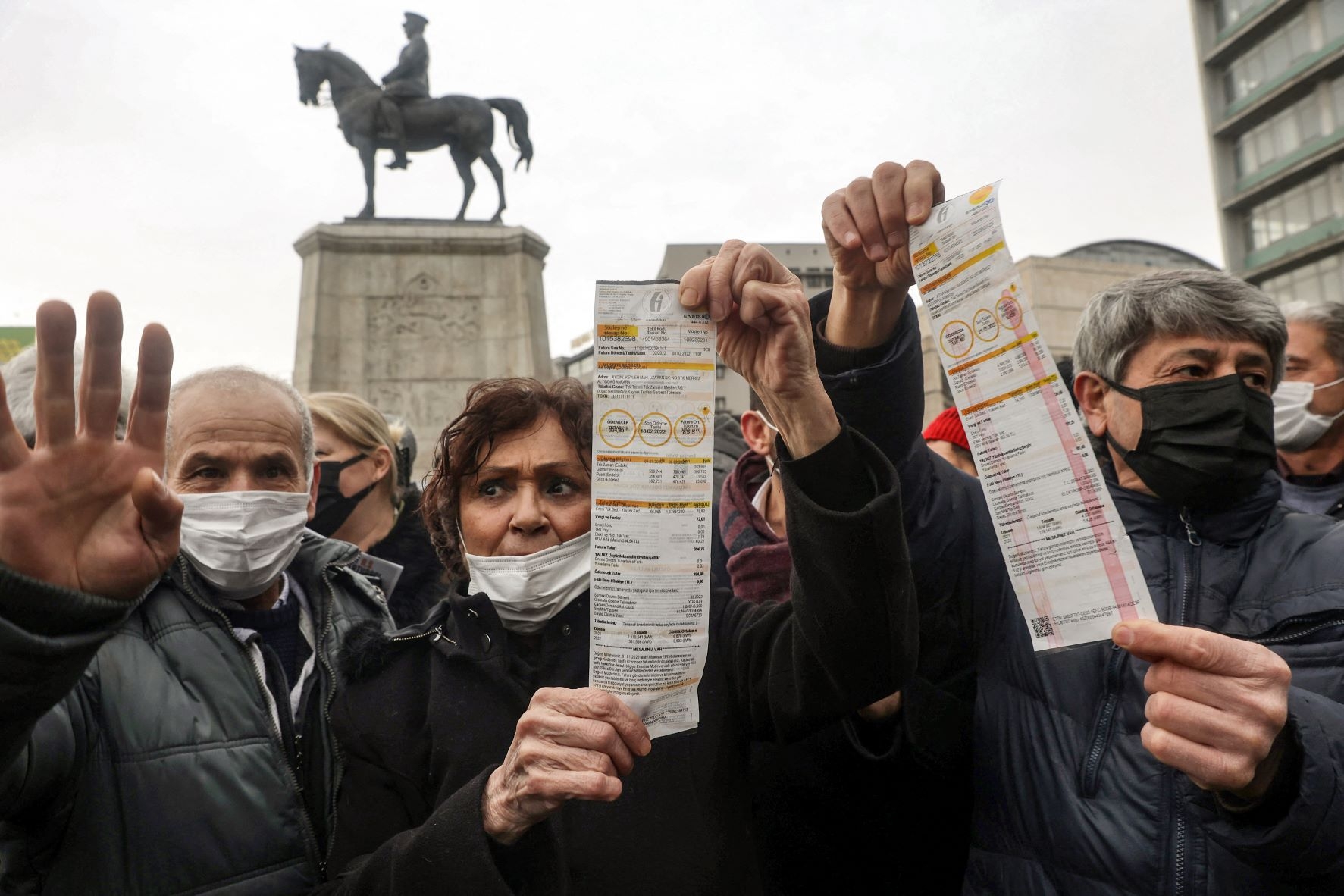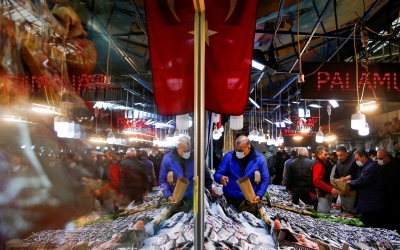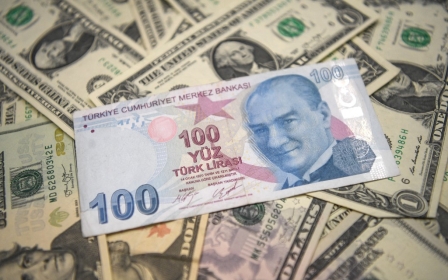Turkey: Inflation hits two-decade high of 78.6 percent

Inflation in Turkey has hit its highest rate for two decades once again, reaching almost 80 percent in June.
The heavy rise in consumer prices, which stood at 78.6 percent over twelve months, against 73.5 percent in May, is largely explained by the collapse of the Turkish lira, which has lost nearly half its value against the dollar in one year.
Inflation has not reached similar levels since 1998, four years before the ruling Justice and Development Party (AKP) came to power promising economic reform.
President Recep Tayyip Erdogan, who is seeking re-election in June 2023, has said he would deal with the impact of rising prices, but the economy has continued to worsen.
He has taken a number of measures, including increasing the minimum wage - earned by roughly 40 percent of working Turks - from 2,826 liras in late December to 5,500 liras ($325) this month.
Erdogan has put forward two reasons for the high living costs: the large volume of dollars in deposit accounts and Turkey’s overreliance on imports.
On Friday Economy Minister Nureddin Nebati vowed that consumer prices would start dropping in December.
"I promise to you and to the president, we will see a drop in inflation starting in December," he was quoted as saying by Turkish media.
Inflation has been a major issue in Turkey, with rising prices chipping away at household purchasing power week after week.
Its calculation is also the subject of intense debate, with the opposition and many economists accusing the National Statistics Office of knowingly and largely underestimating its magnitude.
The Inflation Research Group, made up of independent Turkish economists, said on Monday morning that inflation was actually 175.5 percent year on year, more than twice the official rate.
According to a survey published last week by the Metropoll Institute, less than a quarter of Turks say they trust the official inflation figure.
Erdogan himself has dismissed four directors of the statistical institute since 2019.
AFP contributed to this report
Middle East Eye propose une couverture et une analyse indépendantes et incomparables du Moyen-Orient, de l’Afrique du Nord et d’autres régions du monde. Pour en savoir plus sur la reprise de ce contenu et les frais qui s’appliquent, veuillez remplir ce formulaire [en anglais]. Pour en savoir plus sur MEE, cliquez ici [en anglais].





